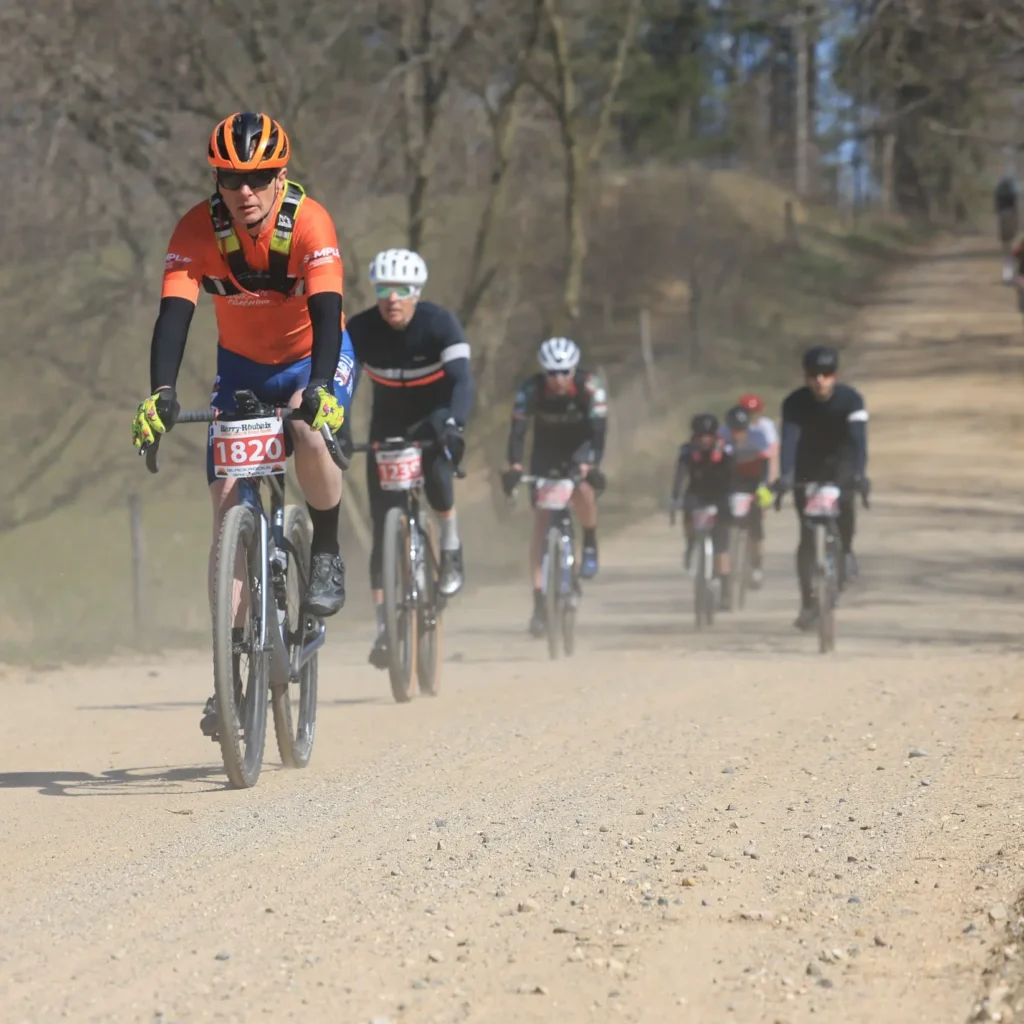
As an older athlete, you ride, you run.
You train almost every day.
And yet… the belly fat seems to be sticking around—or even growing.
What gives?
You’re not alone. Many middle-aged endurance athletes experience this frustrating phenomenon.
Several of my athletes have asked about weight loss, so I did some reading into the research with what works in reducing belly fat, and it comes down to a whole-body and lifestyle approach.
1. Exercise Alone Often Isn’t Enough to Reduce Belly Fat
Studies consistently show that while endurance training improves overall health and helps with weight maintenance, targeted fat loss, especially visceral or abdominal fat, is complex.
Studies suggest that while exercise, especially combined aerobic and resistance training, reduces visceral fat, the effect is modest without dietary change.
Also, core strength exercises probably don’t do anything but make your core muscles stronger. They don’t reduce belly fat, according to this study.
Doing planks and crunches won’t shrink your belly—but that doesn’t mean they’re useless.
Core strength supports posture, helps transfer power more effectively on the bike or during a run, and reduces your risk of injury.
To lose belly fat, though, you’ll need to focus on the big levers: smart fueling, stress management, sleep, and full-body training.
▶️ Takeaway: If your body composition isn’t changing, it’s time to look beyond training volume and consider your nutrition and lifestyle holistically.
2. Hormonal Shifts With Age Favor Fat Storage
As we age, especially after 40, hormonal changes play a big role:
- In men, testosterone gradually declines, reducing lean mass and increasing fat storage.
- In women, perimenopause and menopause involve a drop in estrogen, which contributes to increased abdominal fat.
- Both sexes also experience increased cortisol (stress hormone), which promotes visceral fat accumulation, especially when chronically elevated.
▶️ Takeaway: Managing stress and optimizing hormone health through recovery, sleep, and sometimes medical evaluation is critical, not just more training.
3. Chronic Endurance Training Can Backfire Metabolically
Exercising intensely without adequate recovery, fueling, and sleep can lead to low energy availability and increased cortisol.
Paradoxically, this can promote fat retention, especially around the belly.
This study suggests that prolonged stress and under-recovery can dysregulate appetite and insulin sensitivity, promoting abdominal fat even in active individuals.
And insulin sensitivity, as we’ll talk about later, can lead to more health issues.
▶️ Takeaway: Training smarter, not just more, matters.
Monitor recovery and don’t ignore fatigue, poor sleep, or constant hunger—they’re signs that something’s off.
4. Nutrition Quality and Timing Make a Big Difference
Even if you’re not overeating in terms of calories, excess processed carbs, alcohol, or snacking before bed can impair fat loss, especially when insulin sensitivity drops with age.
Interventions like:
- Increasing protein intake (1.6–2.2g/kg/day)
- Minimizing evening alcohol/sugar intake
- Getting in 20 to 30 grams of protein after a workout and add some carbohydrate. Chocolate milk is a good post-workout fuel.
- Decrease processed foods and many carbohydrates, as we’ll discuss later.
…have been shown to help manage body composition in older athletes.
▶️ Takeaway: It’s not just what you eat, but when and how consistently that matters.
Consider a week of tracking to find hidden culprits.
I often recommend, as well as personally use, My Fitness Pal as an easy tool to occasionally monitor calories.
I don’t want my athletes to fixate on counting calories, but MFP and other apps give an approximate macro breakdown and help you understand your daily consumption.
Maybe you’re not eating enough, maybe you’re consuming too many calories.
Balance is what you’re looking for.
5. Insulin Resistance Can Cause Increased Belly Fat
Your body runs on energy, and one of the main fuels is glucose (sugar in your blood). When you eat carbs—like bread, pasta, fruit, or sweets—your body breaks them down into glucose.
To get that glucose out of your blood and into your muscles and cells (where it’s used as fuel), your pancreas releases a hormone called insulin.
Over time — because of aging, stress, poor sleep, too many refined carbs, or even underfueling and overtraining — your cells stop responding to insulin as well.
So your body makes more and more insulin to get the same job done.
This is called insulin resistance.
The Result:
- Your blood sugar stays higher than normal.
- Your pancreas works overtime to pump out insulin.
- Excess glucose gets stored as fat, especially belly fat.
- You may feel more tired, hungrier, and have a harder time losing weight.
Things that improve insulin sensitivity (make your body respond better to insulin again):
- Regular aerobic exercise (which you’re already doing!)
- Strength training
- Reducing refined sugars and flours
- Sleeping well
- Managing stress
- Eating more whole foods, fiber, and protein
6. Sleep and Stress Are Often the Missing Links
Poor sleep increases ghrelin (hunger hormone), decreases leptin (satiety hormone), and raises cortisol, all driving forces behind belly fat gain.
This study found that five nights of sleep restriction increased visceral fat gain even in lean people, suggesting that regular sleep can improve your chances of shedding – or keeping off – belly fat.
▶️ Takeaway: Aim for seven to nine hours of high-quality sleep, reduce evening screen time, and add mindfulness or breathing practices to lower cortisol.
What Can You Do? Practical Strategies
- ✅ Audit your nutrition: Track for a few days on an app. Are you fueling enough before/after workouts? Are you eating late at night? Are you consuming too many calories?
- ✅ Prioritize strength training: 2–3x/week to preserve lean muscle and support metabolism.
- ✅ Eat more protein: Focus on getting at least one gram of protein per pound of body weight per day. That’s a lot of protein and may require supplementation with protein powder, especially if you’re a vegetarian.
- ✅ Focus on recovery: Improve sleep hygiene, take rest days seriously, and monitor HRV or morning RHR.
- ✅ Manage expectations: Sometimes, body composition changes take time. A more realistic goal is long-term health and sustainable performance, not six-pack abs overnight.
- ✅ Reduce carbohydrates: Reduce carbohydrates, especially processed foods, and focus on eating a protein and a vegetable and/or fruit on your plate for each meal.
Three Things To Know About Losing Belly Fat
1. Training more won’t fix body composition without lifestyle alignment.
Exercise is essential, but fat loss—especially belly fat—requires a whole-body, whole-lifestyle approach that includes sleep, nutrition, recovery, and stress management.
2. Hormonal changes and insulin resistance with age make belly fat more stubborn.
Aging impacts hormones like cortisol, testosterone, estrogen, and insulin. These shifts can promote fat storage around the belly even in very active people, especially when recovery and nutrition aren’t dialed in.
3. Focus on quality and consistency—not perfection.
Small, sustainable changes like eating more protein, managing stress, tracking food intake briefly, and sleeping better can move the needle over time, more than doubling down on workouts alone.
Need more?
Unlock the secrets to mastering gravel racing with our FREE Guide to Gravel Racing! Get yours here.
SIGN UP FOR A FREE Virtual Coffee so we can discuss your goals, ask questions, and talk about making your endurance training more effective, fun, and Simple.
Paul Warloski is a:
- USA Cycling Level 1 Advanced Certified Coach
- RRCA Running Coach
- Training Peaks Level 2 Coach
- RYT-200 Yoga Instructor
- Certified Personal Trainer
- Certified Nutrition Advisor
https://pubmed.ncbi.nlm.nih.gov/19576300
https://pubmed.ncbi.nlm.nih.gov/35361348
https://pubmed.ncbi.nlm.nih.gov/9290093
https://pubmed.ncbi.nlm.nih.gov/23409182




